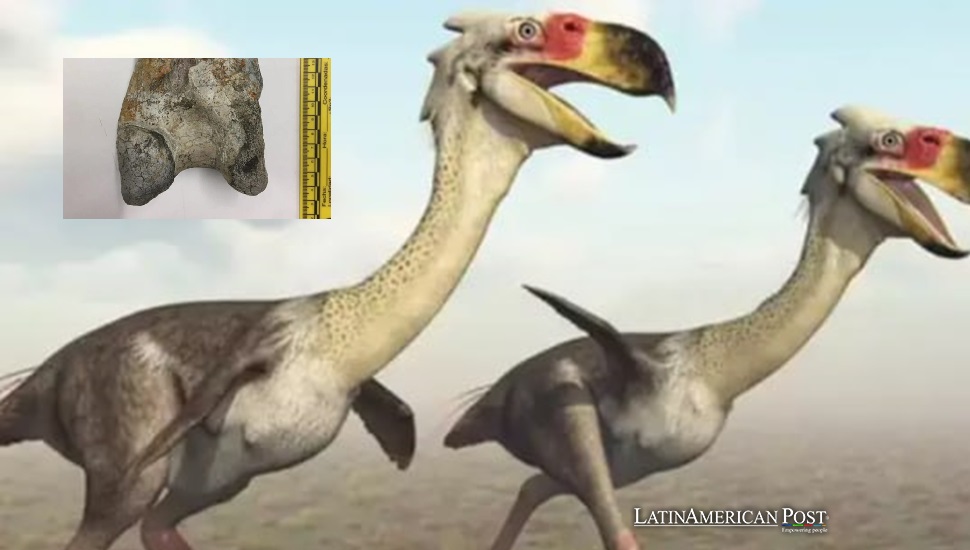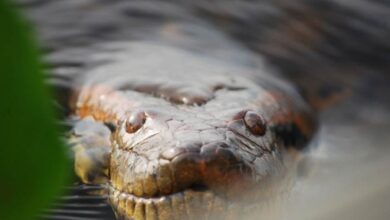Colombia’s Prehistoric Terror Bird of Tatacoa

A prehistoric fossil unearthed nearly 20 years ago in Colombia’s Tatacoa Desert has revealed startling new information about the terror birds that roamed the region millions of years ago, offering unprecedented insights into ancient wildlife and ecosystems in northern South America.
Unearthing Ancient Predator
In the desolate beauty of Colombia’s Tatacoa Desert, a striking landscape of jagged rocks and eroded sand formations, a discovery was made two decades ago that would only be understood years later. Hidden among the sands, a fossilized leg bone lay undisturbed—until now. This bone belongs to a terror bird, a giant, flightless predator that ruled parts of South America millions of years ago during the Miocene epoch. Now, scientists are rethinking what they know about prehistoric wildlife thanks to this remarkable find.
The discovery was not immediately recognized for its true significance. But in 2023, researchers announced that the fossil belonged to the Phorusrhacids, a now-extinct family of birds that were large and feared hunters. The leg bone (from the left tibia) was recently discovered to be that of the most significant terror bird ever described, a colossal discovery in paleontology.
A collaboration led by the terror-bird expert Federico J Degrange, the paper in the Paleontology team contributed some critical new information about how these birds operated in an early ecosystem. Not only does the study tell us how big the bird is, but it also tells us more about its relationship with the environment and its status as a member of the early wildlife of northern South America. This finding alters how we think about the Miocene and the animals that populated it.
A Monumental Find in Colombia’s Tatacoa Desert
Colombia was unearthed in Colombia’s Tatacoa Desert. Colombia is already known for its rich history of prehistoric life. With its unusual desert landscape, this region has long been a site of interest for paleontologists due to the wealth of fossils it contains, particularly from the Miocene period. The fossil represents the northernmost record of Phorusrhacids in South America, suggesting that terror birds roamed much further north than previously believed. Most terror bird fossils have been found in the southern parts of the continent, particularly in Argentina and Uruguay.
The rarity of this fossilized leg bone is what makes it so remarkable. It offers a new perspective on the ancient ecosystem of northern South America during the Miocene, a stark contrast to today’s desert landscape. This was a time when winding rivers and lush environments were the norm, and terror birds, along with large primates, glyptodonts, and massive ground sloths, roamed the land.
The sheer size of the fossilized leg bone suggests that this bird was likely 5%–20% larger than any other known Phorusrhacid. These birds, some of which reached heights of up to nine feet, had long, powerful legs that enabled them to run swiftly and strike with great force. The bones found in the desert are more than just remnants of an extinct species; they provide a glimpse into the life of a formidable predator who would have dominated the landscape with its extraordinary physical attributes.
According to Siobhán Cooke, a leading researcher and associate professor at Johns Hopkins University, terror birds were apex predators with exceptional survival adaptations. “They lived on the ground,” had limbs built for speed, and mostly preyed on other animals,” Cooke explains. Their ex “ordinary physical attributes” allowed them to thrive in a hostile environment, making them one of the most terrifying animals of their time.
Bone Analysis and New Insights
The leg bone was first discovered almost 20 years ago by Cesar Augusto Perdomo, the curator at Colombia’s Museo La Tormenta it wasn’t until 2023 that researchers identified it as belonging to a terror bird. After the identification, scientists used modern scanning technology to create a 3D fossil model, allowing them to examine its details more closely. The bone is estimated to be around 12 million years old, firmly placing it in the Miocene epoch—a time when South America’s unique wildlife America’s
Upon closer inspection, the bone revealed teeth marks believed to have been made by an extinct giant caiman, Purussaurus, a massive crocodilian that could grow up to 30 feet in length. Cooke and her team suspect that the terror bird may have died from injuries inflicted during a fight with this giant reptile. This interaction between a terror bird and a Purussaurus provides valuable insight into the predatory relationships in ancient South American ecosystems, where survival was a constant struggle between large, formidable creatures.
These marks offer a dramatic glimpse into the world of ancient predators. It’s fascinating to consider that creatures like the terror bird and the Purussaurus would have interacted, each fighting for dominance in a world teeming with prehistoric beasts. Cooke’s team hypothesizes that the long legs of Cooke’s bird made it a formidable adversary, capable of defending itself against predators. However, it likely perished due to these adaptations, reminding us of the harsh realities of life millions of years ago.
And the fact that the fossil lies in the heart of the Tatacoa Desert is more exciting than the find itself. We see the desert today; it is dead and lifeless, but millions of years ago, it was a healthy place. The presence of the terror bird here suggests that the area once supported a more complex and diverse ecosystem where predators and prey coexisted in a delicate balance. The fossil paints a picture of a world far different from the one we know today, one teeming with life in ways that are difficult for us to imagine.
A World of Extinct Giants
The terror bird fossil has become a hot topic of discussion, but it is far from the only ancient discovery in the Tatacoa Desert. Its bygone inhabitants have also found numerous fossils, including giant sloths and glyptodonts that coexisted with the terror birds. These animals were part of a complex network of organisms that once thrived in the area. Some mammals were herbivores, while others were carnivores, contributing to a diverse and competitive ecosystem.
The diversity of fossils in the desert reveals how rich and varied ancient South American life was. For example, glyptodonts—massive, armored mammals roughly the size of modern cars—roamed the landscape, likely feeding on plants and grasses. These animals were the giants of their time, much like the terror birds were the giants of the sky. Their coexistence reminds us that prehistoric ecosystems were made up of many different types of animals, all adapting to their environment in different ways.
While the fossil record from this period provides a wealth of information, Cooke believes many more fossils out there have yet to be discovered. “We suspect there are more fossils hidden in collections and in the desert itself that could offer even more insights “into this ancient world,” she says. The possibility of uncovering more specimens is an exciting one, as it could help fill in the gaps of our “understanding” of how terror birds and other creatures interacted with their environment.
Interestingly, the only relatives of the Phorusrhacids today are the seriemas, a bird found in South America. Such birds are much smaller than their more distant ancestors, but they have some of the same behavior and anatomy. It is worth wondering if modern birds give us some idea of how creatures such as the terror bird evolved from those that ruled the ancient world.
A Continuing Legacy
Even as paleontologists explore the Tatacoa Desert and other sites in South America, the terror bird’s skeleton is a window into an old world we can’t miss. This new knowledge defies our previous beliefs about terror birds’ habitat and interaction with other species. What’s also clear from the discovery is that prehistoric life—and birds’ contribution to the history of our planet.
Thanks to advancements like 3D scanning and modern imaging techniques, fossils are now examined in ways that were previously unimaginable. The Tatacoa fossil demonstrates how these relics can lead to groundbreaking discoveries about prehistoric life, even long after the fact. With these tools, scientists can reconstruct landscapes and ecosystems from millions of years ago, allowing us to envision a world where mega fowl and mega tetras thrived.
The terror bird fossil serves as a reminder of how much more there is to discover about early life on Earth. Each new discovery brings us closer to understanding how these animals lived, moved, and contributed to the ecosystems around them. As paleontologists dig deeper into Colombia’s deserts and other fossil-rich regions, we can only wonder what other secrets the Earth holds—waiting to be Colombia’s
Also read: Trump-Milei Alliance Spurs Argentine Markets Amid IMF Hopes
The legacy of these ancient giants, like the terror birds, shapes our understanding of the past. With each new discovery, we come closer to understanding the complexity and beauty of life millions of years ago—and the many mysteries that remain buried beneath the surface, waiting to be revealed.




